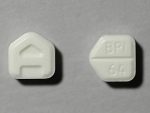From the earliest days of the HIV epidemic, marijuana (cannabis) has been used to treat many of the complications of disease, ranging from the symptoms of HIV wasting syndrome to side effects associated with antiretroviral drug use.
While newer generation drugs have greatly reduced the incidence and severity of many of these conditions, marijuana is still popularly embraced as a means to alleviate the pain, nausea, weight loss, and depression that can accompany infection. There have even been suggestions that marijuana may afford long-term benefits by effectively slowing—or even preventing—progression of the disease.
So what are the facts? Are there any studies to support these claims, or is the use of marijuana in treating HIV all buzz and no benefit?
Early Use of Marijuana in HIV
From the early-1980s to the mid-1990s, HIV was a major contributor to death and illness in the United States. Early generation HIV drugs were prone not only to premature failure, they often came with serious and sometimes debilitating side effects.
Moreover, people living with the disease were at high risk of illnesses we don’t see as frequently these days, including Kaposi’s sarcoma (a rare form of skin cancer), AIDS dementia, and the aforementioned HIV wasting syndrome.
It was, in fact, this last condition which first spurred support for the use of medical marijuana. Doctors, who at the time had few options for treatment, surmised that marijuana’s appetite-stimulating properties could benefit those experiencing the profound, unexplained weight loss as a result of this still-mysterious condition.
-
 Buy pure MDMA, Molly online$12.00
Buy pure MDMA, Molly online$12.00
Since laws in the mid-80s to early-90s forbade the use of marijuana in clinical settings, doctors began to prescribe the Schedule III drug Marinol (dronabinol), which contains a synthetic form of tetrahydrocannabinol (THC), the active ingredient of cannabis.
While Marinol proved to be successful in alleviating many of the symptoms of HIV wasting, many still preferred the “instant hit” afforded from three to four puffs of a marijuana cigarette.
HIV Wasting
While the support for marijuana in the treatment of HIV wasting remains strong, research is still limited. Ultimately, many of the laws banning the use of marijuana in clinical settings have stifled robust scientific investigation. By contrast, studies supporting the use of Marinol have been relatively well established.
Research published in the February 2016 issue of HIV/AIDS concluded that Marinol is able to stimulate appetite and stabilize weight in people with advanced HIV wasting while affording an average gain of 1% in lean muscle mass.
Comparatively speaking, there is little data demonstrating the efficacy of smoked marijuana in achieving the same results. Most research, in fact, seems to show that Marinol is far more effective in achieving weight gain. Despite this, people tend to prefer smoking marijuana for its perceived benefits, from the immediacy of effect to its stress-relieving properties.
Moreover, drugs like Megace (megestrol acetate) are known to be more effective in stimulating weight gain than even Marinol (although weight gain tends to be due to increases in body fat rather than lean muscle mass). Of the three drugs, none seem to have any effect on reversing cachexia, the muscular atrophy associated with severe wasting.
Today, most approaches to therapy include a combination of appetite stimulants and anabolic drugs (like testosterone and human growth hormone) to treat severe wasting. To this end, marijuana may offer benefit beyond weight gain and appetite stimulation. By increasing a person’s overall sense of well-being, there is evidence that medical marijuana can greatly improve one’s adherence to HIV therapy.
An early study in the Journal of Acquired Immune Deficiency Syndromesreported that people with severe gastrointestinal symptoms were 3.3 times more likely to adhere to their HIV drugs if supplemented with smoked marijuana.
HIV-Associated Neuropathy
In addition to its appetite-stimulating properties, marijuana has been frequently used to alleviate the painful nerve condition called peripheral neuropathy, a side effect largely associated with earlier-generation HIV drugs.
Peripheral neuropathy occurs when the exterior sheath covering nerve cells in stripped away. When this happens, the exposed nerve endings can cause an uncomfortable “pins and needles” sensation that can progress to a seriously debilitating condition. In some cases, the neuropathy is so great as to make walking or even the weight of a bedsheet on one’s feet impossible to bear.
A number of research teams have studied the analgesic effects of marijuana in treating this often-incapacitating condition. One such study published in the journal Neurology measured the effects of smoked marijuana in persons with peripheral neuropathy versus a non-THC marijuana placebo used in a second group.
According to the research, smoked marijuana reduces HIV-associated neuropathy by 34% compared to only 17% in the placebo group. Moreover, more than half of the marijuana smokers reported an improvement.
The investigators concluded that the use of smoked marijuana was comparable to currently available oral medications used to treat HIV-associated peripheral neuropathy.
-
Product on sale
 Buy Klonopin (clonazepam) 1 mg and 2 mg for sale online without prescription$60.00 – $825.00
Buy Klonopin (clonazepam) 1 mg and 2 mg for sale online without prescription$60.00 – $825.00 -
Product on sale
 Buy diazepam (Valium) 10 mg for sale online without prescriptionOriginal price was: $3.15.$1.90Current price is: $1.90.
Buy diazepam (Valium) 10 mg for sale online without prescriptionOriginal price was: $3.15.$1.90Current price is: $1.90. -
Product on sale
 Buy lorazepam (Ativan) 1 mg online without prescriptionOriginal price was: $2.50.$1.40Current price is: $1.40.
Buy lorazepam (Ativan) 1 mg online without prescriptionOriginal price was: $2.50.$1.40Current price is: $1.40.
Disease Progression
While there is ample research to support the use of marijuana in treating a number of HIV-associated conditions, there have been loftier suggestions that the drug may, in fact, slow disease progression.
A 2014 study conducted at Louisiana State University showed that daily doses of THC correlated to lower levels of viral activity and better survival rates in monkeys infected with SIV (the simian form of HIV). In addition, the monkeys experienced a dramatic spike in CD4+ T-cells, as well as less weight loss when compared to non-THC counterparts.
According to the study, when prescribed over a 17-month period, THC appeared to decrease damage to the immune tissues of the gut, a primary site of HIV infection. By doing so, disease progression was significantly slowed and healthy immune response maintained.
While it is not entirely clear how THC effects these changes, it is believed that the stimulation of CR2 (a cannabinoid receptor linked to positive therapeutic response) can inadvertently block one of two major receptors key to HIV infection.
If true, this may pave the path to a therapeutic approach by which CR2 could be stimulated to bolster immune function and slow the disease itself. What it doesn’t suggest is that marijuana, whether smoked or taken in oral form, can afford any benefit to treating HIV itself.
Adverse Effects
The subject of medical marijuana remains highly contentious and politically charged. While, on the one hand, there are a growing number of beneficial indications for medical use, there are a number of well-documented consequences that can undermine those benefits.
As a drug, THC acts on specific brain receptor cells that play a role in normal brain development and function. When used recreationally, THC over-excites these cells, providing the “high” that users actively seek.
In teenagers, this level of excessive stimulation can dramatically impact cognitive function over the long term, manifesting with poor memory and diminished learning skills. (The same does not appear to be true for adults who regularly smoke.)
Furthermore, heavy marijuana use is linked to a number of adverse physical and mental effects, including:
- Breathing problems, similar to those seen in tobacco smokers
- Increased heart rate, problematic to those with coronary heart disease
- Possible fetal development problems during pregnancy
- Worsening of symptoms associated with mental illness, including schizophrenia
- Intoxication and slowed response time, nearly doubling the risk of a fatal car crash
- Impairment of male fertility due to lower total sperm count
While the adverse effects of low-level, recreational cannabis use appear to be low, they can be serious in vulnerable individuals. These effects are largely dose-dependent and can vary from person to person.
Contrary to common belief, marijuana can be addictive. Treatment is in primarily focused on behavioral therapies. Currently, there are no medications approved for the treatment of marijuana use disorder.
Marijuana Laws by State
The legal landscape surrounding medical marijuana is fast changing. Today, more than half of the U.S. states now allow for comprehensive, public medical marijuana and cannabis programs.
While the Federal government still classifies marijuana as a Schedule I drug (i.e. having the high potential for dependency and no accepted medical use), the push for legalization has gained momentum, with some states allowing retail sales to adults.
Laws in these states vary but generally provide protection from criminal action if marijuana is used for medical purposes. Home cultivation in some states is also allowed.
As of 2019, 11 states and the District of Columbia have legalized recreational marijuana, while 22 states allow for the prescribing of marijuana for medical purposes.
Despite these legislative changes, as a Schedule I drug, marijuana remains technically illegal from a Federal standpoint. As such, medical marijuana cannot be covered by health insurance nor can it technically be prescribed by a physician who theoretically risks legal action even in states where medical marijuana is legal.
.
Recreational Use Allowed
- Alaska
- California
- Colorado
- District of Columbia
- Illinois
- Maine
- Massachusetts
- Michigan
- Nevada
- Oregon
- Vermont
- Washington
Medical Use Allowed
- Arizona
- Arkansas
- Connecticut
- Delaware
- Florida
- Hawaii
- Louisiana
- Maryland
- Minnesota
- Missouri
- Montana
- New Hampshire
- New Jersey
- New Mexico
- New York
- North Dakota
- Ohio
- Oklahoma
- Pennsylvania
- Rhode Island
- Utah
- West Virginia



